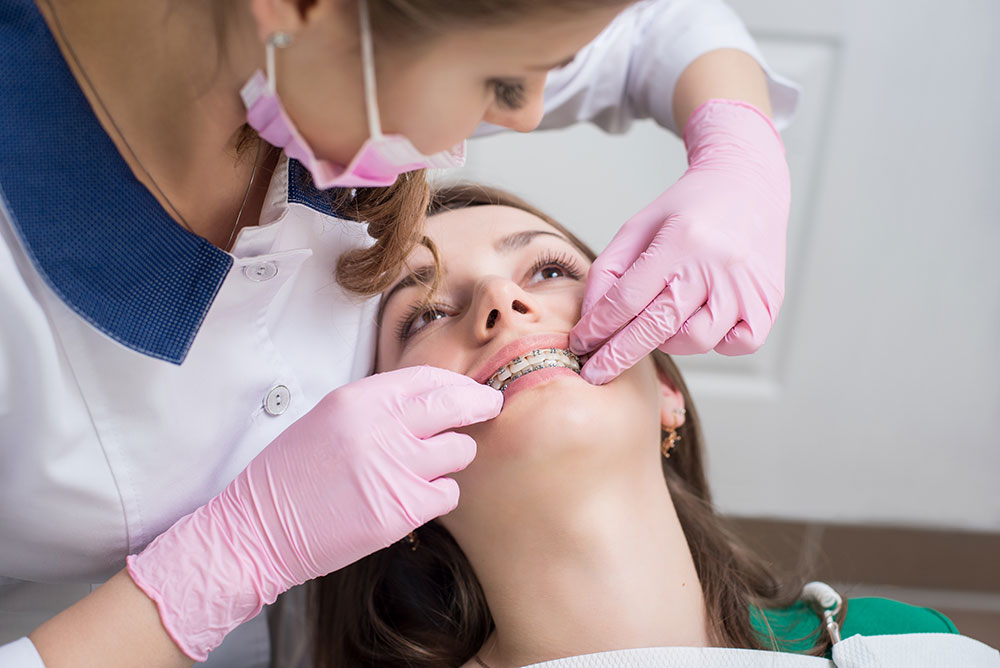The Ultimate Guide To Legacy Orthodontics
The Ultimate Guide To Legacy Orthodontics
Blog Article
Legacy Orthodontics - Truths
Table of ContentsThe smart Trick of Legacy Orthodontics That Nobody is Discussing3 Easy Facts About Legacy Orthodontics ExplainedFascination About Legacy OrthodonticsThe smart Trick of Legacy Orthodontics That Nobody is Talking AboutThe Main Principles Of Legacy Orthodontics
At Advanced Orthodontics, we provide individuals with a holistic treatment experience. On top of that, we provide flexible treatment schedules, adaptable repayment options and an enjoyable, pleasurable experience. invisalign. Telephone call ( 480) 357-4900 today for more details and routine a visit.An orthodontist is a dental expert educated to identify, avoid, and deal with teeth and jaw irregularities. They fix existing problems and are trained to determine issues that may create in the future. Orthodontists deal with individuals of all ages, from youngsters to grownups. Individuals usually associate a perfect smile with health.
Malocclusion, or misaligned teeth, can cause oral concerns, consisting of dental cavity, gum disease, and tough or uncomfortable chewing. Not everybody is born with straight teeth. If you have a bad bite or large areas between your teeth, you might wish to consult a dental professional specializing in orthodontic care.
Some Known Details About Legacy Orthodontics
( Photo Credit Score: DigitalVision/Getty Images) Orthodontists make use of fixed and detachable oral tools, like dental braces, retainers, and bands, to change the placement of teeth in your mouth. Orthodontic treatment is for oral irregularities, including: Misaligned teethBite issues, like an overbite or an underbiteCrowded teeth or teeth that are also far apartJaw misalignmentThe objective of orthodontic treatment is to boost your bite.
A healthy bite guarantees you can consume, eat, and talk effectively. While you could believe of orthodontists as mainly for children or teens that need braces, they can remedy dental issues at any age. Orthodontists attend university, dental institution, and orthodontic school. After graduation, they invest 2 or 3 years in an orthodontic residency program.
All orthodontists are dental experts, yet not all dental experts are orthodontists. Orthodontic residency programs provide intensive, focused guideline for oral professionals. They focus on two locations: How to appropriately and safely relocate teeth How to appropriately assist development in the teeth, jaw, and faceOnce an orthodontist has finished training, they have the choice to become board certified.
10 Easy Facts About Legacy Orthodontics Shown
Malocclusion leads to tooth congestion, a twisted jaw, or uneven bite patterns. Malocclusion is normally treated with: Your orthodontist attaches metal, ceramic, or plastic square bonds to your teeth.
Some people need a headgear to help relocate teeth right into line with stress from outside the mouth. A retainer is a custom-made gadget that maintains your teeth in place.
They can produce additional room in the mouth without having to pull teeth. Orthodontists use wires, medical screws, or plates to support your jaw bone.
You may need to see an orthodontist if you have: Crowding or not sufficient area for every one of your teethOverbite, when your top teeth come by your bottom teethUnderbite, when your bottom teeth are too far forwardSpacing or problems with gapsCrossbite, which is when your top teeth fit behind your base teeth when your mouth is closedOpen bite or an upright void between your front bottom and upper teethMisplaced midline, when the center of your bottom and upper teeth don't align Dealing with an oral malocclusion can: Make biting, eating, and speaking easierImprove the proportion of our face and your general appearanceEase discomfort from temporomandibular joint disordersSeparate your teeth and make them simpler to clean up, aiding prevent tooth degeneration or cavities It's frequently a dental practitioner who initially notifications misaligned teeth throughout a routine exam.
Everything about Legacy Orthodontics

Throughout your first orthodontic examination, you'll likely have: An oral examPhotos taken of your face and smileDental X-raysPanoramic (360 degree) X-rays of your face and headImpressions to navigate to this website create molds of your teethThese tests will assist your orthodontist know just how to wage your therapy. leesburg clear braces. An orthodontist is a dental practitioner who's had training to treat your teeth and jaw
Orthodontists may do surgical procedure, exams,X-rays,and even more to assist you attain an extra comfy, much healthier smile. An orthodontist is concentrated on your bite, so something like a cracked tooth would certainly be handled by a dental practitioner. Orthodontists are dentists however not all dental professionals are orthodontists. Orthodontists are focused on your bite, or the means your teeth fit with each other, and the straightness of your teeth.
Ever before wondered exactly how stars constantly appear to have completely lined up teeth? The answer commonly depends on the skilled hands of an orthodontist. What precisely does an orthodontist do? Orthodontists are oral professionals who concentrate on remedying abnormalities in the teeth and jaws. Their expertise surpasses just producing a gorgeous smile; it encompasses enhancing your overall oral wellness and function.
Some Known Facts About Legacy Orthodontics.

, orthodontists have a diverse toolkit at their disposal. These reliable braces use a system of brackets bound to the teeth and linked by cords.
Clear aligners, like Invisalign, are a preferred option for clients looking for a much more discreet therapy alternative. These detachable trays are personalized to progressively move the teeth's setting. Headwear may be made use of combined with braces or aligners to apply extra targeted forces, especially for correcting jaw inconsistencies. In cases of slim jaws, palatal expanders can be used to create area for proper tooth positioning.
Report this page